Both Iceland’s capital and its largest city, Reykjavik is a rather quiet place that is still home to roughly two-thirds of the country’s population. Often used as a base for exploring the isle’s lovely landscapes, the understated city has a surprising amount to it.
Set in the southwest along the shores of Faxafloi Bay, it was first settled in 870 AD by the Norseman Ingolfr Arnarson. It was only later in the eighteenth century though that Reykjavik developed into the island’s cultural, economic and administrative centre.
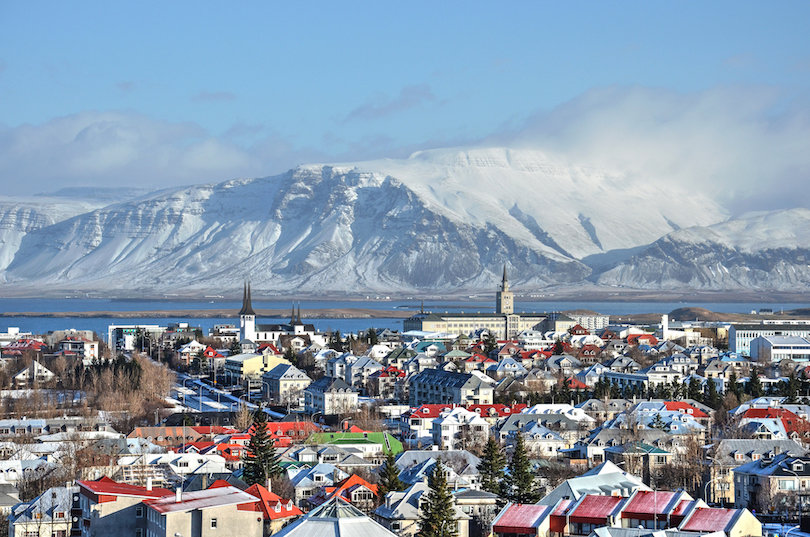
Although quite spread out with sprawling suburbs, its centre is home to cute colourful houses, shops and restaurants. There are also countless top-class museums to explore as well as the increasingly trendy Grandi area around the Old Harbour. Its main landmark though is the huge Hallgrimskirkja that overlooks everything from atop its prominent hill.
See also: Best Places to Stay in Reykjavik
With unforgettable whale-watching tours and Northern Lights trips to take, there are plenty of things to do in Reykjavik as well as stunning natural attractions nearby. To top it all off, the breathtaking Blue Lagoon’s warm, soothing waters only lie just a short drive away.
In this post, we'll cover:
21. Whales of Iceland Museum
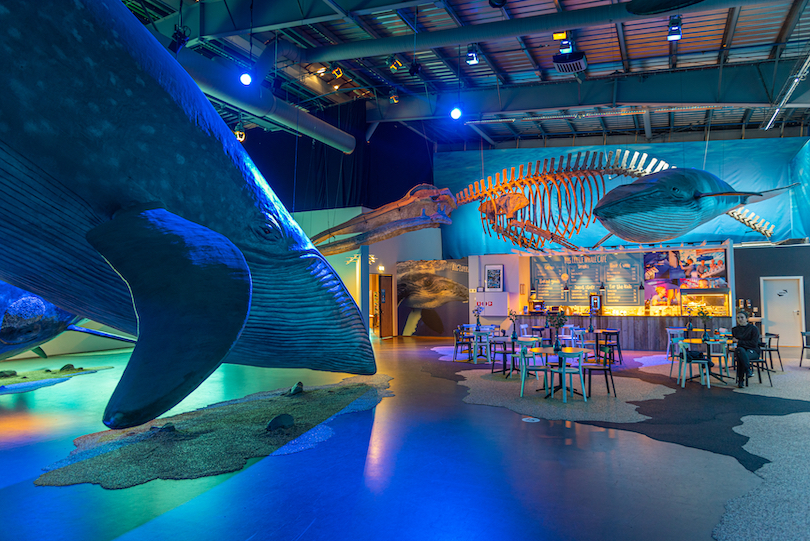
A firm favorite with families, the Whales of Iceland Museum is full of exciting exhibits and immense models of majestic creatures. Just one of many attractions to open up around Grandi harbour in recent years, it lies near the city center.
First unveiled in 2015, it features 23 life-sized figures of the various cetacean species inhabiting the country’s waters. As well as explaining their habits and habitats, displays detailed conservation efforts and how everyone can help protect them. Its entrance fee also includes an excellent audio guide tour and access to the award-winning Sonic Sea documentary.
Gazing at the enormous marine mammals suspended from the ceiling is an amazing experience only bettered by spotting one in the wild! You can also snap pics and selfies with its whales, dolphins and porpoises and shake their squishy fins.
20. Hike Mount Esja
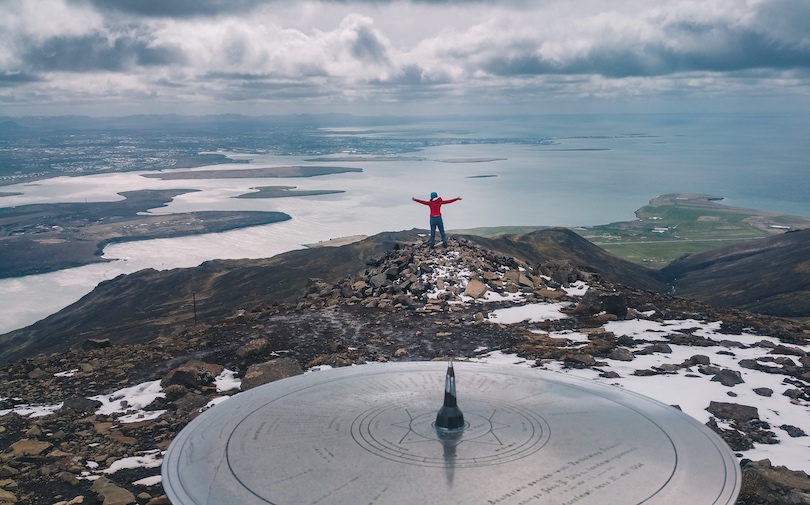
While the whole of Iceland is awash with spectacular scenery, you don’t have to go very far to escape the city and immerse yourself in nature. One of the most popular places to hike is Mount Esja, only an hour’s drive northeast of the capital.
Actually, a long, low-lying volcanic mountain range, Esja, or Esjan in Icelandic, was formed during the last Ice Age. Whereas its basalt upper reaches are bare, pretty wildflowers and waving grasses coat its lower slopes. In total, its highest point towers 914 meters above the meadows and bays about it.
Meandering their way up to the top of the hulking great landmass are a number of terrific trails. The most frequently trodden takes you right up to a large rock called Steinn. From here, you can gaze out over the ocean and Reykjavik far off in the distance.
19. Aurora Reykjavik
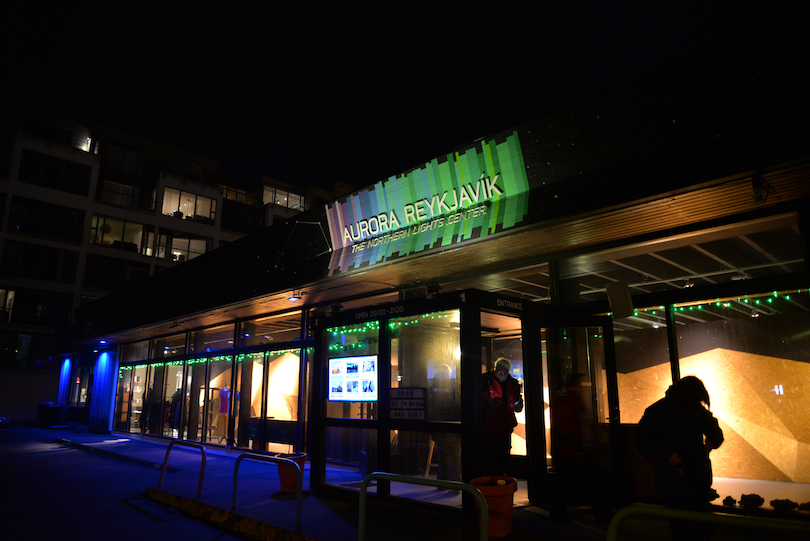
If you want to learn more about the mysterious natural phenomenon known as the Northern Lights, Aurora Reykjavik is definitely the place to go. In addition to actually recreating the dazzling display at the museum, interactive exhibits explain the science behind the spectacle.
Also located at Grandi harbor, the center walks you through the history and folklore swirling around the Aurora Borealis. It also details how charged particles in the atmosphere paint the dark night’s sky a mesmerizing mix of different colors.
If you’re not lucky enough to experience the bewitching lights outdoors yourself, don’t miss its thirty-minute time-lapse movie. Using the latest technology, it creates beautiful images of the auroras right before your eyes. The museum also tells you the best camera settings to capture photos of the polar lights and the best weather conditions and time of year to see them.
18. Reykjavik Maritime Museum
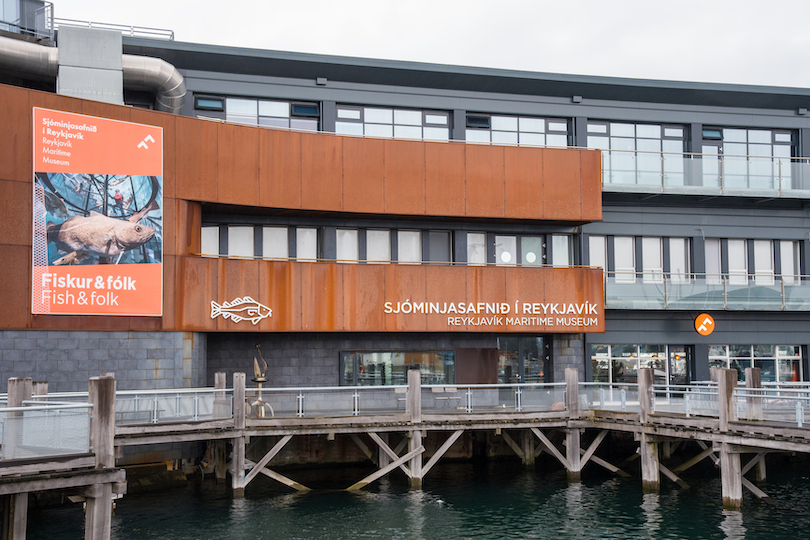
For those interested in the island’s rich history, culture and heritage, the Reykjavik Maritime Museum is an absolute must. Set right next door to Aurora Reykjavik, its two floors are packed with artifacts and artworks, maps, models and more.
Appropriately enough, the museum occupies what was once a fish factory alongside the Old Harbour in the center of town. Its enthralling exhibits look at how early settlers relied on fishing to survive and how it remains an important industry today. Besides covering various methods for catching fish over the centuries, these also examine their impact on Iceland’s culture and traditions.
Particularly riveting are its sections on the ‘Cod Wars’ and the giant Odinn coast guard ship you can explore outside. Coupled with the brilliant Perlan Museum, we thought it provided invaluable insight into Iceland’s identity, history and nature.
17. Einar Jonsson Museum
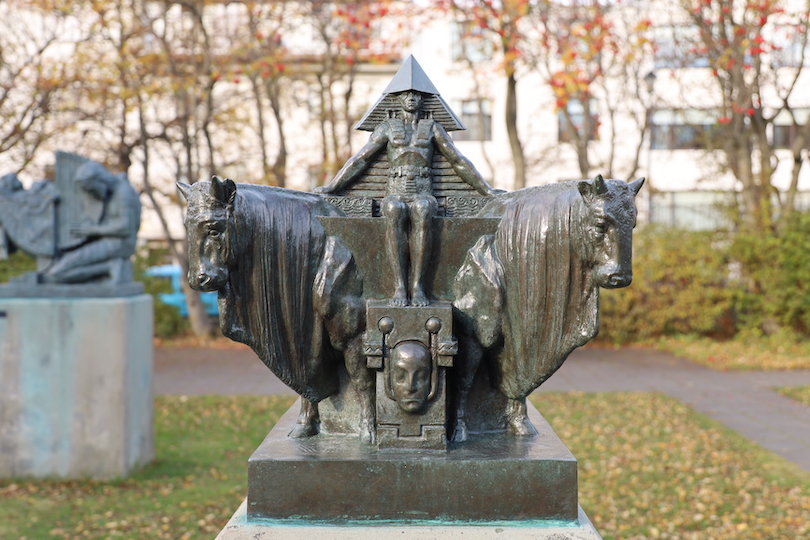
Oft-overlooked in favor of the humongous Hallgrimskirkja alongside it, this small museum contains lots of astounding artworks. Dedicated to Einar Jonsson, one of Iceland’s eminent artists, it focuses on his powerful sculptures and groundbreaking public monuments.
The first art museum established in the country, it sprawls across the three floors of the eye-catching Eclecticist building he designed in 1923. Aside from ogling at its rather austere, grey exterior, guests can actually enter his old apartment and studio.
The highlight though is of course seeing his striking sculptures that draw heavily on Icelandic history and mythological Norse heroes. Intricately crafted, his bronze cast figures convey a lot of drama with their unusual shapes and silhouettes exploring the human psyche and soul. Other than experiencing all of Iceland’s incredible landscapes, this was one of our favourite stops travelling around the island.
16. Laugardalslaug
If after all the sightseeing and strenuous outdoor activities, you want to kick back, relax and soak in some hot springs, then Laugardalslaug is an excellent option. Way more affordable than the popular Blue Lagoon, it lies just a short drive east of the city center.
Since being built between 1958 and 1968, the very popular public sports and swimming complex has expanded numerous times. Now the largest in the nation, it includes not just two gigantic swimming pools and several hot pots but a steam bath, seawater bath and water slide too.
Although slightly worn, its facilities are still the best in the city with a jacuzzi and sauna also on offer. After wallowing in their warm waters or enjoying a massage, you can always visit the botanic garden and zoo next door.
15. Videy Island
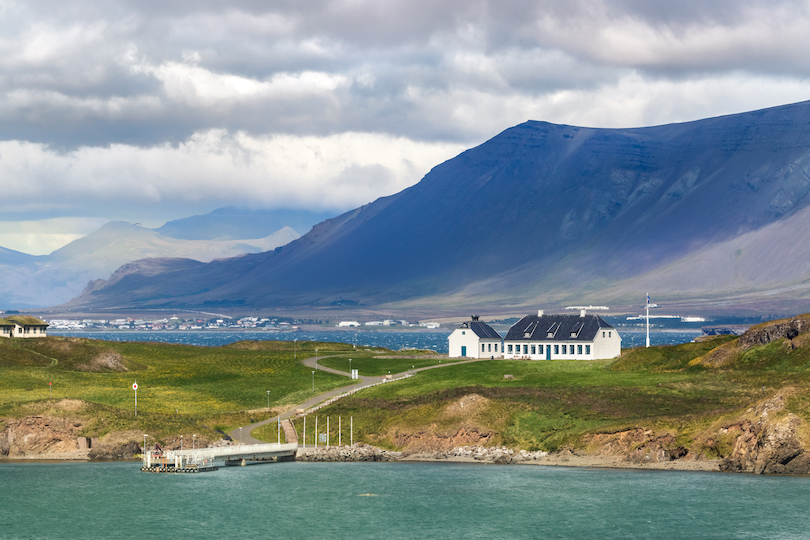
Just a short ferry ride from Reykjavik’s waterfront is the scenic and serene Videy Island. The largest in Kollafjordur Bay, its enticing combination of history, nature and contemporary artworks makes it a favorite draw with locals and tourists alike.
Once an active volcano, its exposed reaches remarkably contain some of the oldest archaeological sites in the whole of Iceland. Amidst its verdant landscapes, you can spy the crumbling ruins of tenth-century houses alongside a more recently abandoned village.
Wandering about slowly is a very enjoyable experience due to the isle’s calm, quiet and epic views of the mainland. You can also stop by the Imagine Peace Tower – Yoko Ono’s memorial to John Lennon – and admire some of its other imaginative artworks nearby. Due to the uninhabited island’s secluded setting, it too is a fantastic spot to see the Northern Lights.
14. Day Trip to the Blue Lagoon
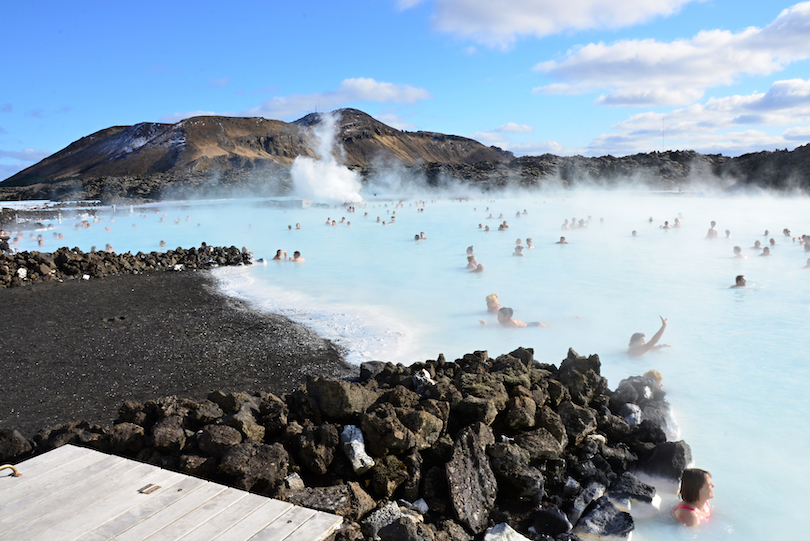
As it is undoubtedly one of the island’s most iconic sites, you really have to fit in a day trip to the Blue Lagoon if you can. Located forty minutes’ drive southwest of the center, the geothermal spa’s unique setting and colour make it amazing to visit.
Actually, a byproduct of the nearby Svartsengi Power Station, its milky blue waters and salt-encrusted shores stand out delightfully against the desolate lava field lying all around them. Only adding to the artificial lagoon’s appeal is the atmospheric clouds of steam that billow across its surface.
Always kept around 37-39 degrees, even when it’s freezing outside, its silica-rich waters are a treat to float in. You can also plaster yourself in minerals and mud or wade up to the swim-up bar for a drink. Although pretty pricey, we would definitely recommend visiting as the Blue Lagoon is almost unique in the world.
13. Arbaer Open Air Museum
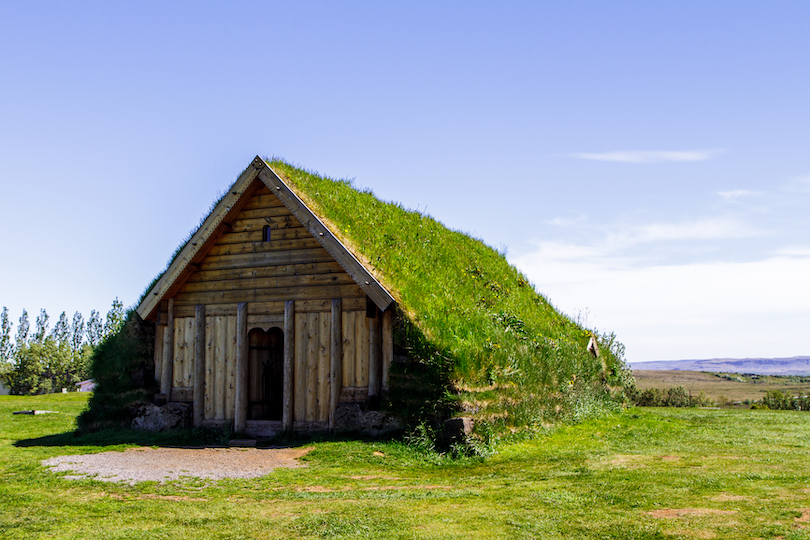
Arbaer Open Air Museum is a good place to learn about Reykjavik’s past. It was a working farm until 1957 when it transitioned to a new life as a living history museum.
At Arbaer Open Air Museum, visitors can see how Reykjavik’s residents lived in the past with staff wearing period costumes in what is now a village and farm. Twenty buildings were relocated from central Reykjavik to form the core of the new museum.
Exhibits highlight various times in Reykjavik, with various events, including craft days and vintage car shows, highlighting the period.
12. Laugavegur
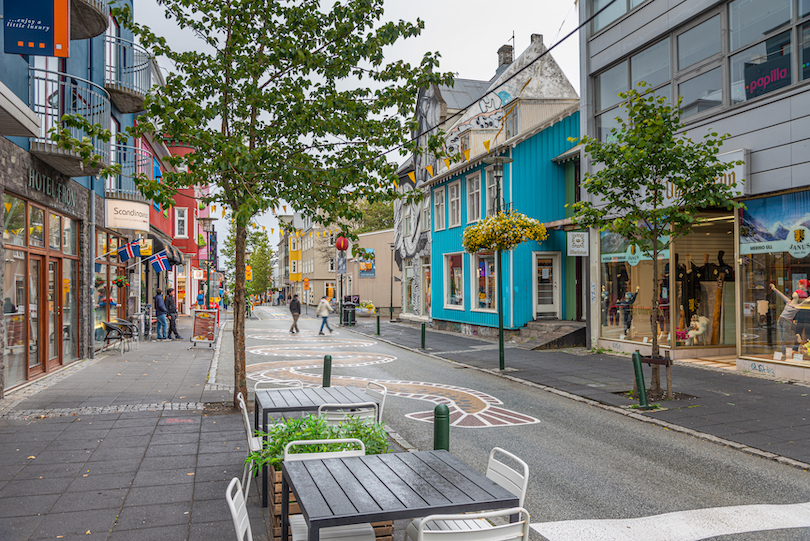
Travelers who like to shop should make a beeline to Laugavegur, Reykjavik’s main shopping street. Located in the central city, Laugavegur is one of the capital’s oldest streets.
The name translates as “wash road” as it leads to a hot spring where Reykjavik women did their laundry. Described as “hyper cool” by Vogue, Laugavegur is filled with hip (read “expensive”) shops in an historical neighborhood.
Laugavegur also has some of the city’s top eateries and trendy nightlife, especially on Friday and Saturday nights. Whenever travels are looking for fashionable clothes, house wares or just a good time, Laugavegur is where it’s happening.
11. Settlement Exhibition
Visitors whose interest in Reykjavik’s early days was piqued at the Saga Museum may want to add the Settlement Exhibition to their bucket list of things to see in Reykjavik. Reykjavik City Museum is home to the Settlement Exhibition – Reykjavik 871±2. That’s because Reykjavik is believed to have been settled in 871 AD plus or minus two years.
The exhibition focuses on a hall that was believed inhabited from 910 to 1000, though it was only discovered in 2001. The hall is believed to be one of the oldest man-made structures in Iceland. The exhibit also includes relics used by Vikings.
10. Saga Museum
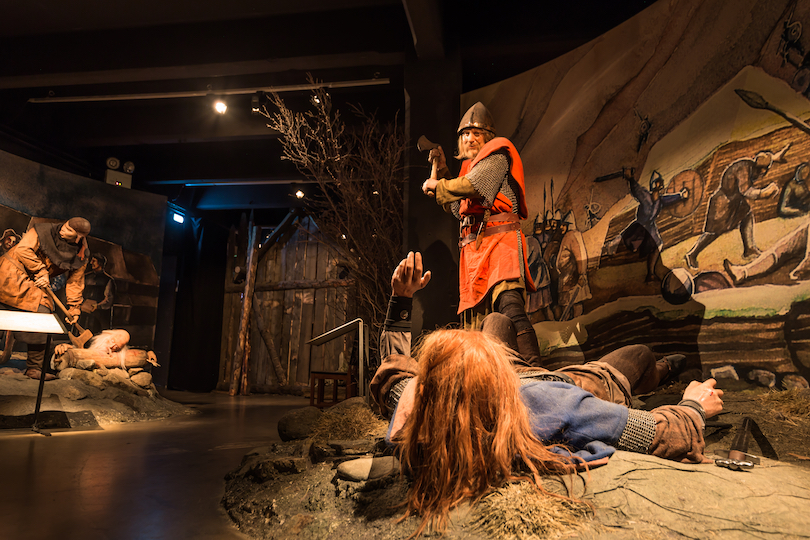
Visitors can learn more about the Norsemen, not the most peaceful of warriors, and their impact on Icelandic history at the Saga Museum. The museum, with displays sometimes described as “bloodthirsty,” brings to life the days of the Norsemen in the early settlement of the country.
You’ll see wax figures of these fierce people as well as see costumed Norsemen, perhaps looking for havoc to wreak, wandering the grounds with staffs in hand. Visitors also will see ordinary people going about their everyday lives. Wannabe Norsemen can even have their pictures taken in costume.
9. Grotta Lighthouse
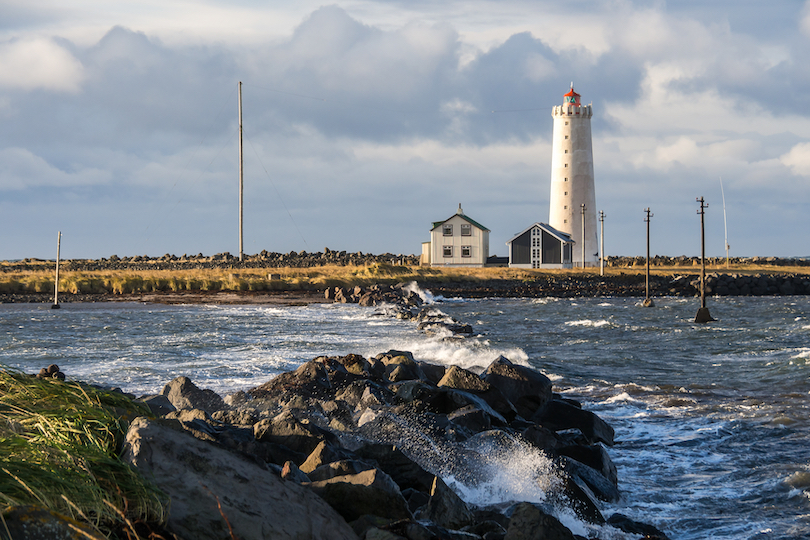
Jutting out dramatically into the wild waves of the Atlantic Ocean is the gorgeous Grotta Lighthouse. Only accessible at low tide, it is a popular spot to watch sunsets, spot seabirds and see the Northern Lights.
Perched right at the end of the Seltjarnarnes Peninsula, it was erected in 1897 to warn ships about the rugged coast and hidden isles ahead. During high tide, the tombolo connecting it to the mainland is completely covered by the rising waters on either side. As such, make sure to check the tide times carefully before visiting.
While some head here to see its black sand beach and gleaming white tower during the day or as the sun sets, just as many visits during the pitch-black night. This is because the complete darkness of its remote setting makes it a great place to witness the Aurora Borealis.
8. Golden Circle Trip
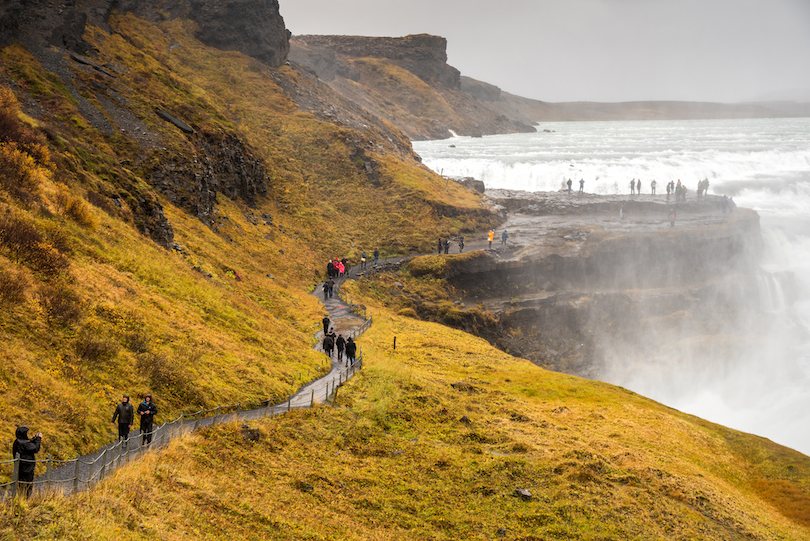
A wonderful way to see even more of Iceland’s awe-inspiring landscapes is to take a trip around the Golden Circle. In just one day, you’ll see not just hot springs and historic sites but incredible canyons, craters and waterfalls too. While you can easily drive it all yourself, many prefer to take a guided tour.
One of Iceland’s most popular tourist routes, the loop takes you from Reykjavik through the southern uplands and back. Stretching 300 kilometers in total, it usually includes stops at Thingvellir National Park, Gullfoss waterfall and the Haukadalur geothermal area. All very impressive, they count among the country’s most stunning natural attractions.
On top of seeing spurting geysers like Geysir and Strokkur or the remarkable rift valley in Thingvellir, there are plenty of other places to stop by. The colourful volcanic crater lake of Kerid always attracts lots of attention as does the sparkling white Skalholt Cathedral.
7. Perlan
Instantly recognizable from its futuristic-looking outside, Perlan is set atop Oskjuhlid Hill, overlooking the rest of Reykjavik. At the museum, visitors learn all about Iceland’s gorgeous glaciers and geysers, its volcanoes, mountains and ice caves.
Originally a cluster of six hot water tanks, the site was re-imagined in 1991 and turned into a museum with a glass dome being perched upon them. Its interactive exhibits look at how Iceland was formed and how life on the isolated island evolved. The highlight though is its ice exhibit where you actually don cold weather gear and explore a replica of an ice cave.
You can also catch a sublime aurora show in its planetarium or experience an Earth-shaking volcano eruption. What’s more, divine 360-degree panoramas over the city and ocean can be enjoyed from its rotating restaurant.
6. Go Whale Watching
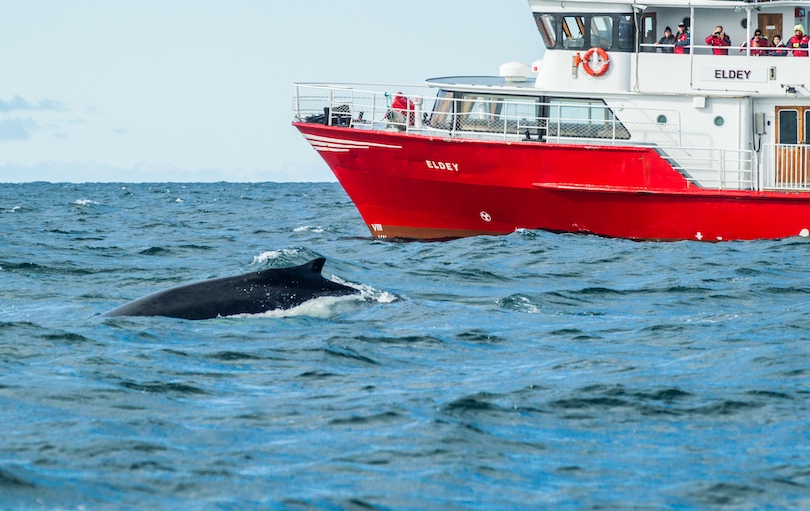
Other than exploring its nearby natural sights, one of the most memorable things to do in Reykjavik is to go whale watching. From the Old Harbour, countless companies run excursions out to see the epic animals up close in the wild.
From April to September, over twenty kinds of cetaceans can be spied in the enormous Faxafloi Bay alongside the city. While minkes and humpbacks are quite commonly sighted, lucky guests may spot orcas, dolphins and other whales too. The rest of the year, you still stand a good chance of seeing at least some porpoises or puffins.
On the trip, your expert crew will teach you all about the majestic mammals you’re almost certain to see. We didn’t expect to be so touched by the sight of their large fins followed by spouts of water as they prepared to dive back down into the deep again. A very moving experience, whale watching was one of the main highlights of our time in Iceland.
5. Harpa
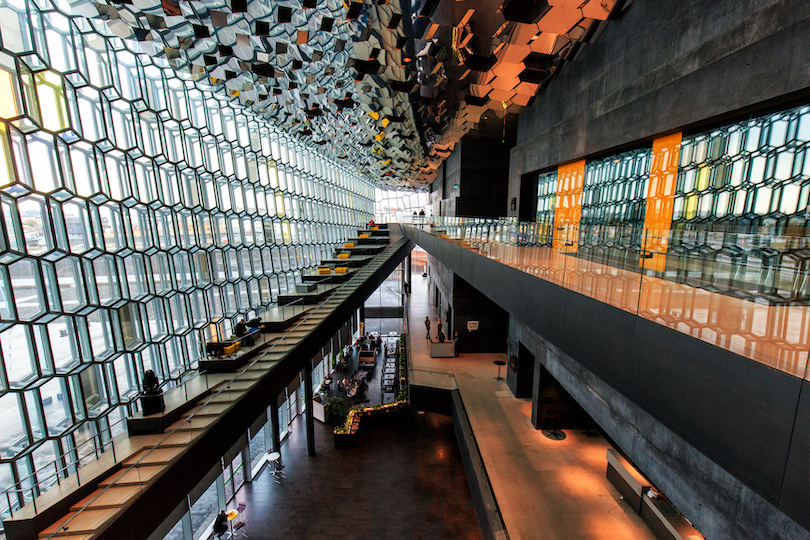
Though it opened only in 2011, Harpa already is considered one of Reykjavik’s greatest landmarks. Harpa is a venue for conferences and concerts, but it’s best known for its eye-catching architecture.
Different colored glass panels surround the building’s steel framework. It was the first building in Reykjavik built expressly to host concerts, with its first concert broadcast on live TV.
Before construction was completed, Harpa was turned into a temporary mosque for the film version of the novel Gæska: Skáldsaga. Events it hosts include International Jazz Day and Reykjavik Children’s Culture Festival.
4. Northern Lights Tour

Equally unforgettable was seeing the Northern Lights paint the heavens with such a bewildering array of beautiful colors. As Reykjavik is one of the best places on Earth to experience the Aurora Borealis, tons of tour providers take people out to scan the skies at dark spots surrounding the city.
While the sunny summer months may attract migrating whales, the dark of winter is instead the best time to witness the natural phenomenon. Between September and March, the cold climate and pitch-black skies make the swirling solar winds really stand out spectacularly.
Make sure to wrap up warmly for your tour as standing in the cold for hours does get quite tiring. It’ll all be worth it though when you gaze up and see the surreal light show dancing right above you!
3. National Museum of Iceland
The National Museum of Iceland showcases the country’s history from settlement by the Vikings to today. The museum, established in 1863, is heavy on the Settlement Era, telling how the chieftains ruled.
It displays such items as swords, a bronze statue of Thor (the Norse god of thunder) and drinking horns. Its most prized possession, however, may by the Valþjófsstaðir church door. This 13th century door depicts a knight slaying dragons to save a lion, who then becomes his faithful companion.
The museum, housed in a distinctive building, has more than 2,000 artifacts on display. Visitors give the audio guide high marks.
2. Solfar Sculpture
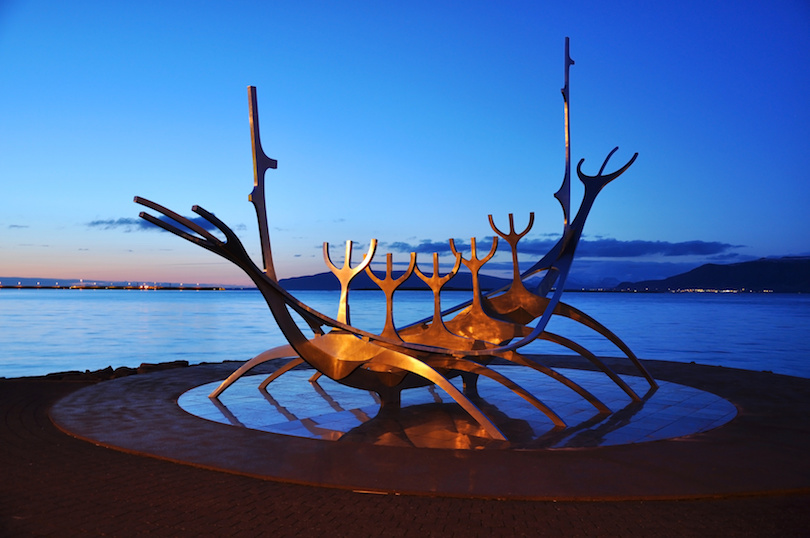
Solfar Sculpture, also known as the Sun Voyager, can be found on Saebraut Road on the Atlantic Coast. Designed by Jon Gunnar Arnason, the piece won a competition for an outdoor sculpture to mark the 200th anniversary of Reykjavik.
Unveiled in 1990, the artist said he based his design on the belief that early Europeans followed the sun to reach Mongolia, with their descendants migrating on to Iceland. Solfar Sculpture is a huge abstract steel sculpture that resembles a ship, though not a Viking ship, and is considered an ode to the sun.
1. Hallgrimskirkja
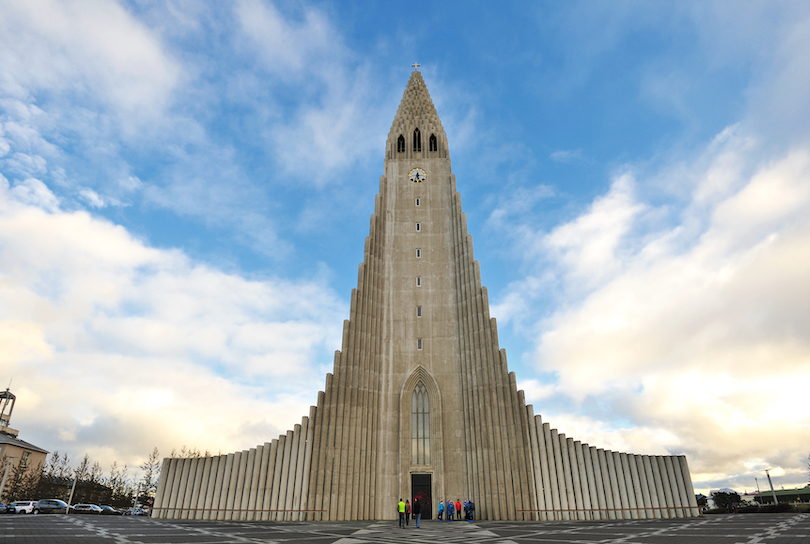
Hallgrimskirkja is a Lutheran church in central Reykjavik, but it’s not just any church. It’s the largest church in Iceland and, at 75 meters (247 feet) high, one of the tallest buildings in the country.
Even for atheists, the church is a must-see landmark with its modernistic design in Iceland’s capital, as it spires high into the sky. Travelers who think the church looks like a mountain peak are spot on.
It was designed to resemble the mountains, rocks and glaciers of Iceland. It’s so high because church fathers wanted it to be higher than the Catholic church here. Construction on this unique building started in 1945 and ended 41 years later.
Where to Stay in Reykjavik

Despite its relatively small population, Reykjavik is actually spread across most of the Seltjarnarnes Peninsula and its surroundings. As such, it’s best to stay in or around the center so that you’re within walking distance of most of its main attractions clustered around the Old Harbour.
A great option is the four-star Grandi Hotel which is located right next to the Saga Museum and Aurora Reykjavik. Aside from its central setting in the city’s creative quarter, it has a cool industrial-style look and clean, spacious rooms. Guests also loved its brilliant bar, breakfast and friendly and welcoming staff members.
On the opposite side of the city, just past Hallgrimskirkja, is the comfortable and quiet 22 Hill Hotel. More affordable than many other options in the capital, the three-star hotel lies next to a number of shops and cafes, roughly twenty minutes’ walk from the center. It also provides guests with a tasty free breakfast at its on-site restaurant.
How to get there
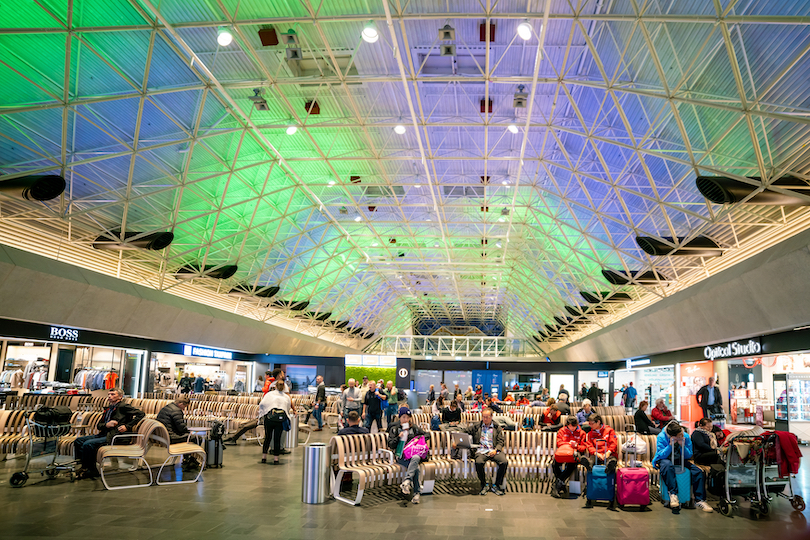
Almost all visitors to Iceland enter the country at Keflavik International Airport. Situated just forty-five minutes’ drive southwest of the capital, it is the island’s main airport. Another much smaller one also lies right in the center of town. From Reykjavik Airport, you can fly around the country or to Greenland and the Faroe Islands.
Otherwise, the main mode of transport is by bus with the Straeto company connecting the capital to much of the rest of the country. Other than this, most people opt to rent a car themselves to explore the island along the Ring Road. Guided tours are also very popular here with walking being the most convenient way to get around the center.
Best Time to Visit Reykjavik

Map of Things to do in Reykjavik
 © OpenStreetMap © MapTiler © Touropia
© OpenStreetMap © MapTiler © TouropiaReykjavik sees by far the most visitors from June to August when the days are longest and temperatures average 11 to 13°C (52 to 55°F). With up to 21 hours of daylight, you have time to see the center, soak in the Blue Lagoon and take scenic trips about the Golden Circle.
Already expensive, hotel prices almost double as everyone makes the most of Iceland’s brief summer. The city’s weather is notoriously unpredictable, so even these months see 18 days with at least some rain. There are, however, fun events like Culture Night, National Day and Pride to enjoy.
While temperatures drop to between 6 and 9°C (43 to 48°F), September and October are both popular months to go. Besides being quieter and more affordable, there is the film festival to attend. Iceland Airwaves in November also attracts plenty of people.
Although the winter means shorter days and freezing temperatures at night, some still visit in December. This is the best time to see the Aurora Borealis with all its snowy landscapes creating some magical photos. You can also ski, snowboard and explore its ice caves.
Easter also sees more visitors as spring returns. While not as green as summer, prices are cheaper and you can see puffins, golden plovers and even whales migrating along the coast.

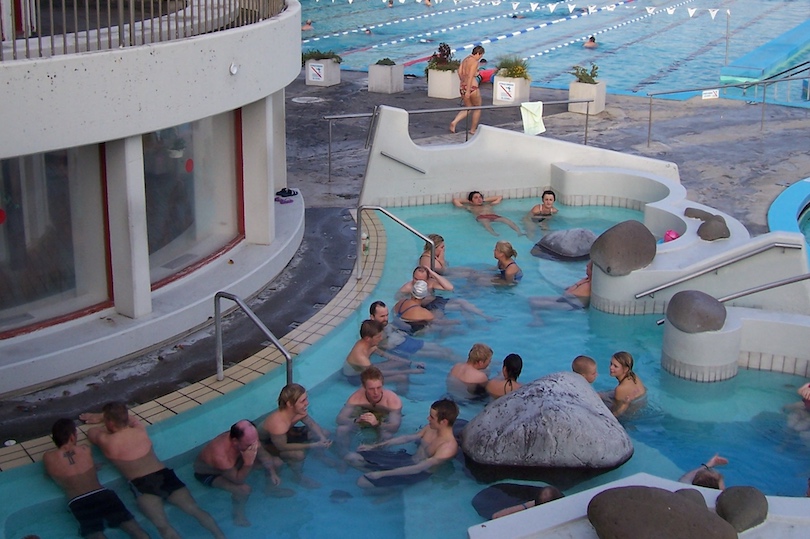
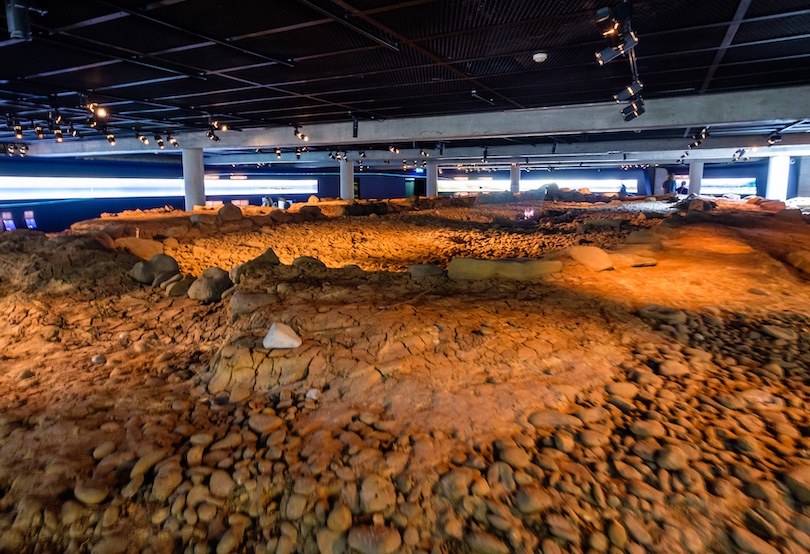
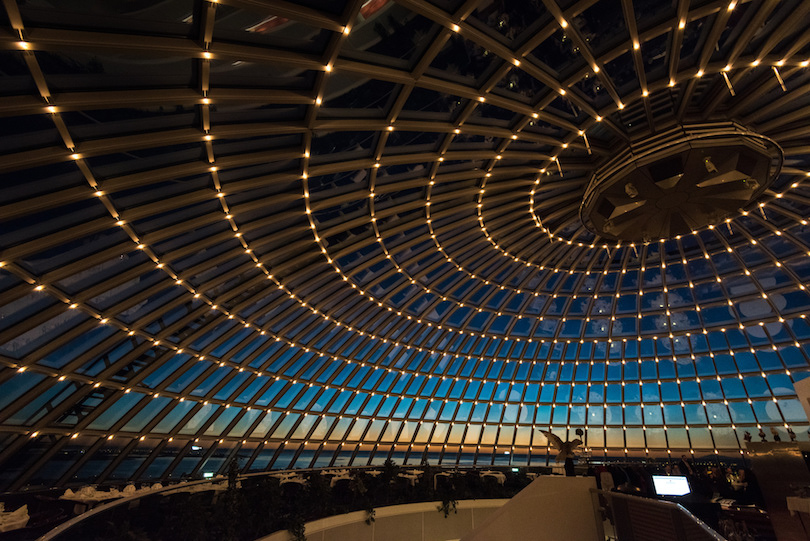
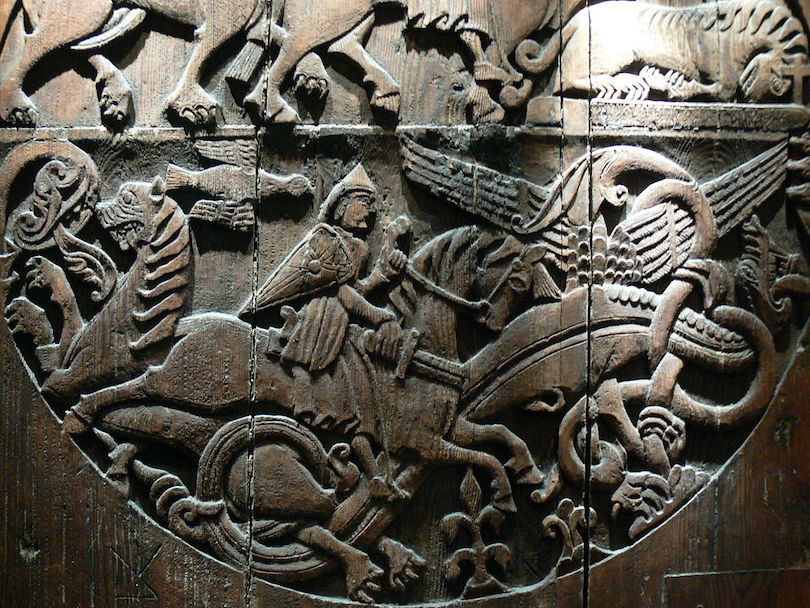
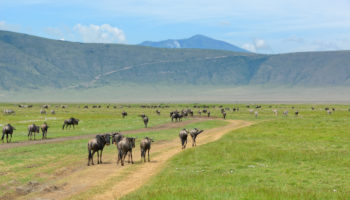
Leave a Reply